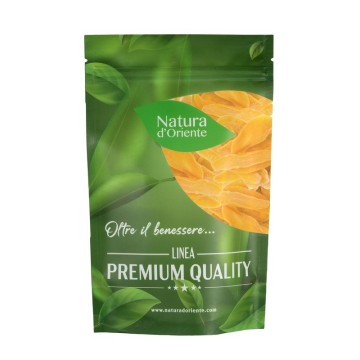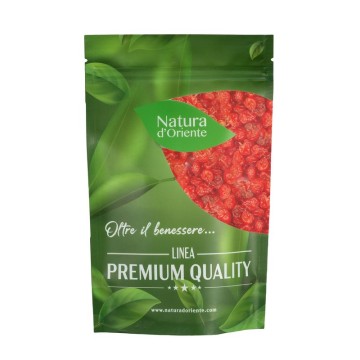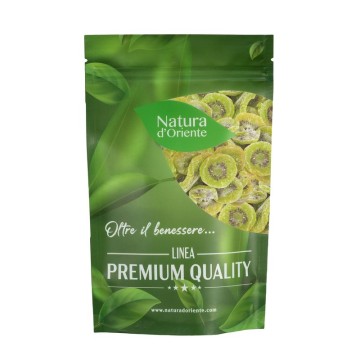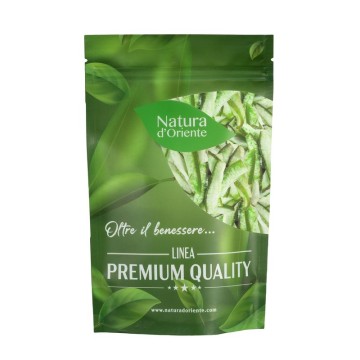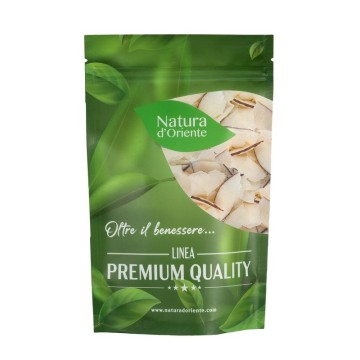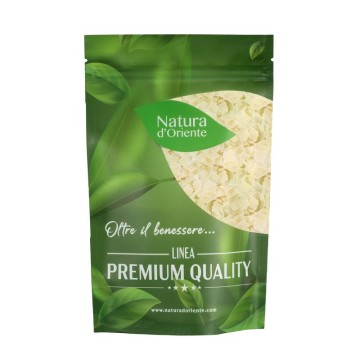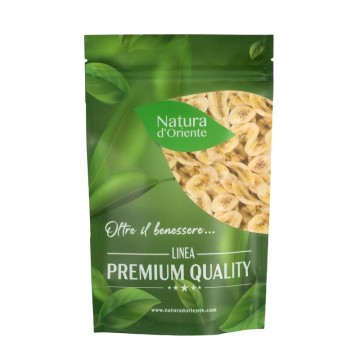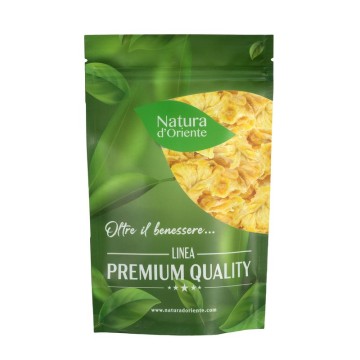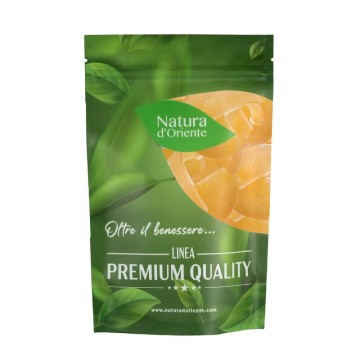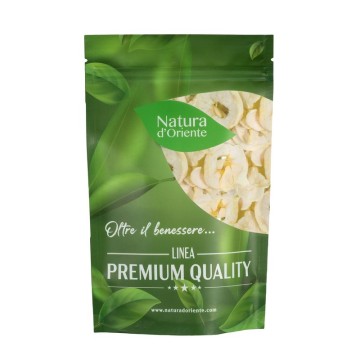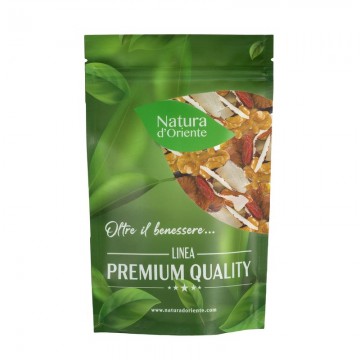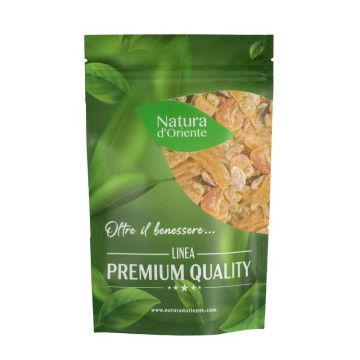Candied orange peel
Candied oranges are actually orange peel caramelised in a syrup of water and sugar, to be sweetened.
The peel is transformed into delicious soft and fragrant candied orange cups, but also rich in the benefits that orange peel brings to our body.
Candied orange: properties and benefits
Beyond the pulp and juice, the orange peel is highly regarded for its beneficial characteristics in terms of well-being. The properties of the peel are also present in its form of candied orange, even when immersed in the sugary syrup.
The candied orange in cups can facilitate digestion, to reduce the swelling of gastric problems and fight constipation. Among the substances that facilitate the digestive process, naturally fighting intestinal gas and stomach acid, there is d-limonene. An orange peel essential oil that has natural anti-inflammatory characteristics that neutralizes stomach acids.
The dietary fibers contained in candied orange peels also support digestion in its correct process. They are present in a more consistent way than orange and can fight bloating syndrome and intestinal irritations.
The candied orange peels, being transformed using the syrup, must in any case be consumed not excessively, to prevent too much sugar from counteracting its anti-acidity factor.
p>
The orange peel also has expectorant properties for phlegm, relieving cough symptoms. Even in terms of relaxation, the essential oils of candied orange peel have a soothing effect, which induces sleep.
In candied oranges, you will also find several antioxidant polyphenols, and essential oils useful for promoting cardiovascular well-being. Indeed, one of the components of orange peel is hesperidin – a flavonoid that metabolizes blood lipids and helps fight bad cholesterol.
The candied orange provides precious components for health such as tangeretin and nobiletin, antioxidants that fight free radicals, helping the body in its anti-aging function.< /p>
Also possessing vitamin C inside, candied orange peel can be useful for strengthening the immune system.
Origins and History of cultivation
The sweet orange is a plant known since ancient times, among citrus fruits it is perhaps the most cultivated in the world, also because it adapts well to various environmental conditions. Its origin is not defined, but it is thought that orange trees were born in China, differentiating between sweet orange and bitter orange over 4000 years ago.
From the East it soon spread to Asia Minor, among the Arabs, passing through Egypt, North Africa and finally Europe.
The orange is mentioned in Greek mythology by Juno, wife of Jupiter, who brought as a dowry small trees with golden fruits, oranges, which have since been a symbol of love and fertility . In fact, orange blossoms are used in marriage as a wish.
In the Middle Ages in Italy, bitter oranges were cultivated as ornamental plants in Sicily, under the Arab domination (IX-XI AD) and in the Renaissance, still in the South, the cultivation of sweet orange. This tree was introduced by the Portuguese, and in many dialects, in fact, the orange was called "Portugal".
The plant was increasingly appreciated and is still today renowned for its beauty and for its sweet and juicy fruits, consumed all over the world.
Plant and Fruit
Citrus sinensis L. is a tree belonging to the Rutaceae family, which actually appears to be a hybrid between the pomelo and the mandarin, both older.
The orange is famous because it gives its precious fruits, sweet or bitter oranges.
It extends up to 12 meters in height, with elongated leaves and white flowers. The fruits are round and orange, with a rough skin, and usually with a large harvest.
The orange tree can flower and bear fruit at the same time, given that it rests for only 3 months, and the first oranges can be harvested in November, while the last ones in May and June. An advantage that we clearly see on our tables.
The orange has been cultivated all over the world for centuries, for this reason there are many varieties of orange, and among the most famous there are those with red flesh, with blonde flesh, with thin or thick skin. Among the many varieties there are those of table fruit, for juice, for the production of juices, those suitable for creating dried orange slices, or candied orange peel in cups.
Nutritional values of candied orange
The orange that we find candied is the part of the peel, which takes in calories (about 300) mostly due to the process of immersion in the syrup, otherwise it is a part of the fruit low in calories and with many nutrients.
It does not contain fat (0%), but fiber (about 2%), potassium (about 70mg / 100g), magnesium (about 7mg / 100g), traces of iron and zinc.
This part of the fruit contains vitamin C (about 4 mg / 100 g), vitamin E (0.1% ), B vitamins and in particular vitamin B9 (folate μg 4 / 100 g) and different elements of which we mentioned (d-limonene, hesperidin, etc.).
How to consume candied oranges in cups in the kitchen or as a snack
The peels of oranges that have been caramelized and transformed into a soft and sweet snack, can also be used in the kitchen for the preparation of other dishes, as well as snacks.</ p>
In fact, they become a delicious treat that can be eaten alone or added to decorate sweets, brioches, cakes, muffins, cupcakes or ice cream. In fact, candied fruit is traditionally a component of panettone or pastry specialties such as cannoli.
Candied orange can also be added to tea tastings, or to yoghurt. You can also prepare a fruit salad by inserting candied fruit, or add candied oranges in cups, in a mix of cereals and dried fruit.
The candied orange can also be used as a side dish in some recipes to contrast with the salty, given the its flavor that combines the bitterness of the peel with the sugar of the syrup.
You can also add candied oranges to drinks as smoothies or drinks, to sweeten them or to give a unique flavor – as well as the setting of candied orange peel for cocktails.< /p>
Candied orange: side effects and contraindications
There are no particular contraindications to taking this candied fruit, but we know that it normally contains more glucose and sucrose than fresh fruit, being candied in syrup . For this reason, it is better not to abuse this food for those suffering from diabetes.
In large doses, candied orange could cause a laxative action or acidity in the stomach.


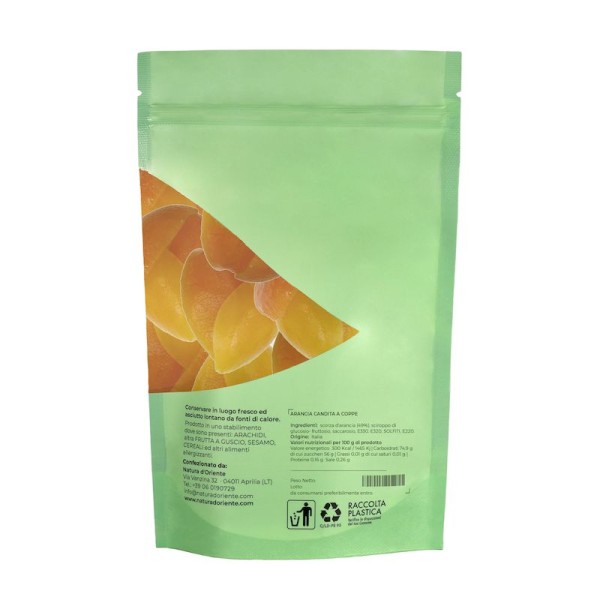






 No reward points for this product.
No reward points for this product.
